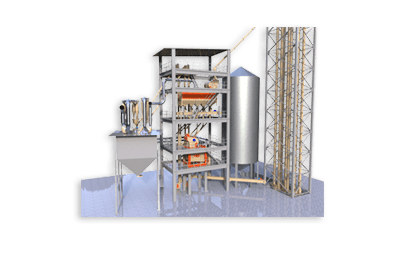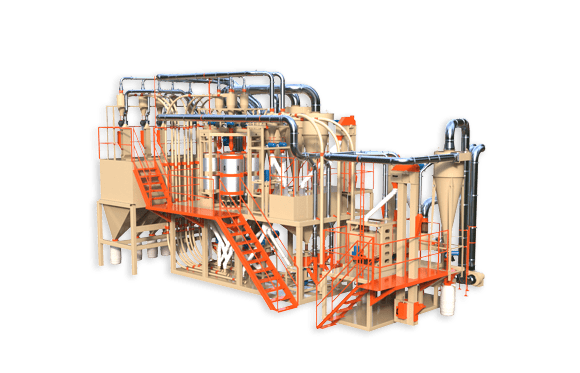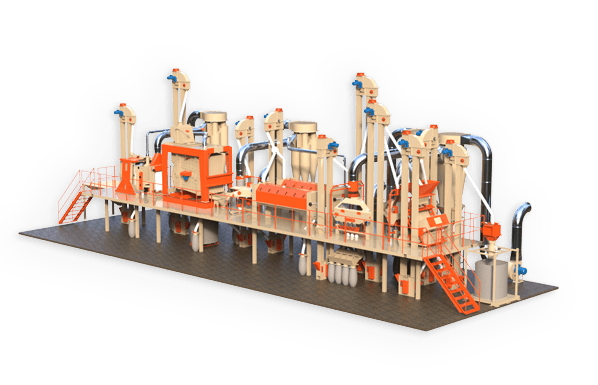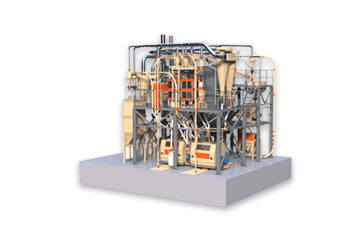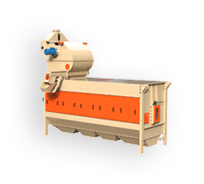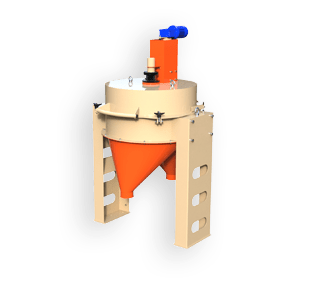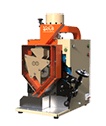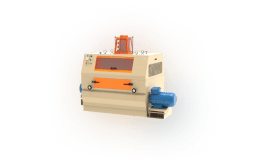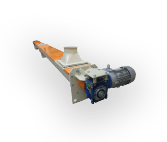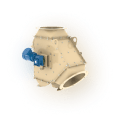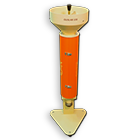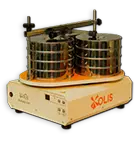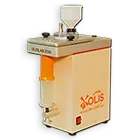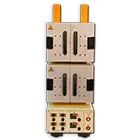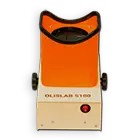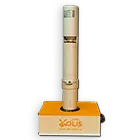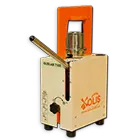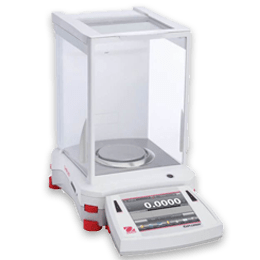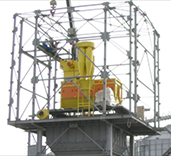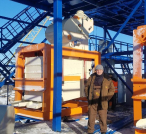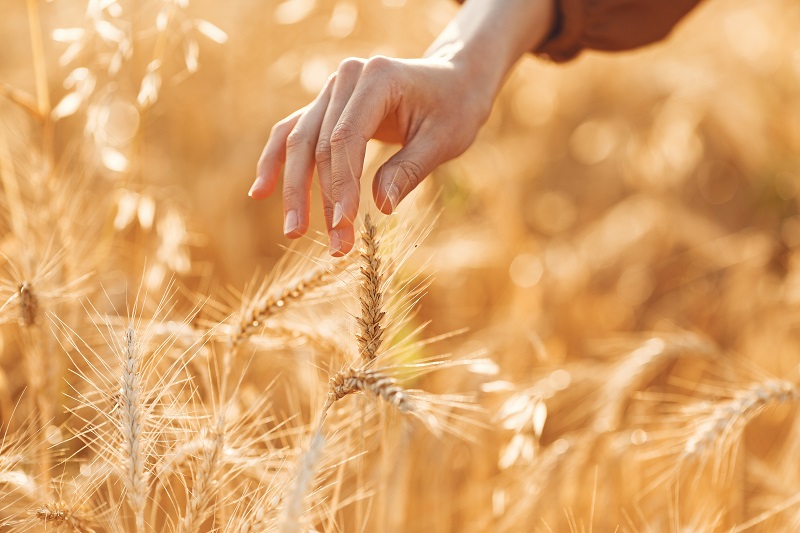A.P. Vereshchinsky – Doctor of Technical Sciences, General Director (LLC “OLIS”, Odessa);
Pirus Y.B. – Director for Development and Implementation (OLIS LLC, Odessa)
Millet is known to be a good precursor for other crops when organising crop rotation, as well as a valuable raw material for cereal production. Millet is a traditionally consumed product in the diet of the population of many countries. At the same time, the tasks of ensuring economically feasible output of groats and its quality required by the market are often not solvable within the framework of traditional millet processing technology, which limits the production and consumption of this cereal crop.
The technology of millet production is conditioned by the peculiarities of millet grain structure, as well as by the chemical composition of its anatomical parts. Grains of millet are covered by floral sheaths which densely cover a kernel, but are joined with it only on a small area – “rubchik” which is located in area of a germ. When external forces are applied, the floral sheaths are relatively easy to split into two parts and separate from the nucleus. The floral shells account for 15…18°% of the grain weight, contain mainly fibre and almost no nutrients. Therefore, the production of millet requires the complete removal of the floral shells. The traditional technology of millet processing (Fig. 1 a) provides for grain husking on three husking systems realised by roller-deck machines with rubber deck. To ensure the required husking efficiency, the grain is pre-fractionated and processed separately on the first husking system. The millet husk is not suitable for feed purposes and can be utilised as fuel. After removing the shells, the millet kernel (dranz) is ground in machines with abrasive surfaces, traditionally using husking and grinding machines of A1-ZSHN type. By grinding, translucent fruit and seed coats, as well as partially aleurone layer and germ are removed from the kernel surface, as a result of which millet acquires a yellow colour and a decent marketable appearance. Thus, millet is mainly the endosperm of millet, which accounts for 65…70 per cent of the grain weight.
The technological operations of millet husking and dranz grinding are associated with the formation of a significant amount of feed products. In accordance with the current requirements [1] basic norms of output of products at production of millet assume formation up to 5 % of crush and up to 11,5 % of flour. However, the practice of millet production shows that in most cases the actual amount of crushed grain and flour is much higher than their calculated values due to a significant reduction in groat yield.
Hence, increasing the efficiency of peeling and grinding is a promising direction for improving millet processing technology.
Analyses of literature data and our prospecting studies have shown that gentle modes of millet husking can be effectively implemented by using huskers with rubberised rollers. The use of such peelers [2] allowed VNIIEKIProdmash to propose and implement a new method of millet production, characterised by a significant simplification of the technological scheme of processing by reducing the number of applied operations. The specified technology assumes exclusion of grain fractionation before husking, use of two husking systems with huskers with rubberised rolls, as well as a grinding system using a husking and grinding machine of A1-ZSHN type. After each of the above systems light products of peeling (husk, flour) were separated in aspiration columns, and crushed material – in gritsorting machines. Production approbation has shown expediency and prospectivity of the specified method. The obtained indicators of actual yield, commercial appearance and quality of groats exceeded the indicators obtained with the use of traditional technology. However, despite the obvious advantages, the new technology has not found application in the industry, which, in our opinion, is mainly due to the low wear resistance of the rubber used at that time. Therefore, the use of modern wear-resistant polymeric materials with a wide variety of their physical and mechanical properties would open the way to the industrial use of the progressive technology, as well as further increase its efficiency. Besides, application of modern peeling and grinding machines of “Cascade” design at the stage of dranz grinding, which, unlike machines of A1-ZSHN type, allow to realise gentle impact and high efficiency, can serve as an additional reserve in increasing the efficiency of the considered technology.
For the purpose of selection of characteristics of polymeric materials for covering of rolls of a peeling machine, definition of rational modes of peeling and grinding, and also substantiation of structure of technological process we have carried out a cycle of researches. As a result, the most acceptable for use polymeric materials have been established, the wear resistance of which is more than 3 times higher than that of rubber. It was confirmed that certain modes of operation of the peeling machine provide effective peeling of millet grain without its fractionation and separate processing of each fraction (tab. 1). The study of peeling products after the 2nd peeling system showed that the contained unpeeled grains are grains with broken floral shell, which can be easily separated when performing the grinding operation in the machine of “Cascade” design. Thus, increasing the efficiency of the 3rd peeling system by setting more “rigid” processing modes and its use in the production process makes no sense. In addition, due to the absence of crushed material in the products of peeling systems, there is no need for its selection, and, therefore, eliminates screening operations, realised in grinders.
Table 1.Recommended and actual results of peeling and grinding systems
| System | Shelled grains, % | Crushed kernel, % | ||
| recommended values [1] | received values | recommended values [1] | received values | |
| 1st peeling plant | 80-90 | 70.6 | not more than 2.0 | 0 |
| 2nd peeling plant | 90-95 | 92.9 | not more than 3.7 | 0 |
| 3rd peeling | 95-99 | 94.6 | not more than 5.0 | 0 |
| Sanding | — | 100 | — | 3.5 |
The completed studies allowed to recommend the structure of millet processing (Fig. 1b), realised using peelers with rolls covered with polymer material and peeling and grinding machine of “Cascade” design. Approbation of the improved technology was carried out in bench conditions on millet grain of the 1st class with kernel content of 78.9% and husk content of 17.4%. Comparison of the calculated yield of products, determined by the recommended method [1], with the actual yield (Table 2) showed that the actual yield of millet is 6.5% higher than the calculated one due to the reduction of crushed and flour yield. The increase in the actual yield of husk compared to the calculated one can be explained by a decrease in its crushing and getting into flour. Decrease in the actual yield of wastes of I and II categories is due to the low efficiency of the stage of grain cleaning, realised under test conditions, and getting part of the impurities in by-products at the stages of husking and grinding. According to the quality indicators for ground millet, it is determined that the obtained groats meet the requirements of the highest grade. It should be noted that the highest grade of millet allows the content of up to 0.3% of unshelled grains, but such grains in the obtained millet was not detected.
Hence, the improvement of the new technology of millet production, made with the use of new materials and machines, provides the possibility of its wide implementation in the industry, and is characterised by a minimum composition of technological operations, and allows to obtain a higher yield of ground millet with better quality.
Table 2.Baseline, estimated and actual yield of processed products
| Processed products | Exit | Exit | Exit |
| basic, % | calculated, % | actual, % | |
| Millet ground | 65 | 63 | 69.5 |
| Feed crush | 4 | 4 | 3,1 |
| Feed Meal | 7.5 | 8.4 | 6,7 |
| Luzga | 15.5 | 14.9 | 16.7 |
| Category I and II wastes | 7 | 6,7 | 3.5 |
| Drying | 0.5 | 0.5 | 0 |
| Category III waste and mechanical losses | 0.5 | 0.5 | 0.5 |
| Total | 100 | 100 | 100 |
LITERATURE
- Kroshko G.D. Rules of organising and conducting of technological process at large’yanichnyh plants. [Text]/G.D. Kroshko [and others]. – K.: Vipol, 1998. – 145 p.
- Greenberg E.N.. Production of groats [Text]/E.N. Grinberg. -M.: Agropromizdat, 1986. – 89-92.
Published by
“Grain Processing Technologies”
No. 2 (179) February 2014


